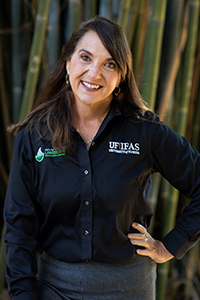Wendy's Wanderings
July 1, 2021
Fresh Inspiration
Gardeners are a creative lot. I have seen raised beds crafted from empty wine bottles, stepping stones made from tree trunk rounds, and rain barrels that could only be described as works of art. Inventive growers fashion recycled items into fantastic flower containers and turn twigs and stems into bird houses or pollinator homes. I have even seen a passion vine arbor created from a formerly loved satellite dish.
But when the end of the growing season hits in the vegetable garden, we often just plain run out of creative ideas on what to do with the 105th zucchini, the 400th cucumber, and the next-to-last quart of cherry tomatoes. Hanging bags of veggies on your neighbor's door or sneaking some on to your coworker's desk can take some of the pressure off, but sometimes those spring garden plants keep on producing.
If you are looking for fresh ideas on using your garden veggies and fruit, check out the Fresh from Florida recipes pages. I love the videos that show just how easy it is to prepare delicious dishes. One of my favorites is the Florida roasted vegetable ratatouille because it uses eggplant, squash, cherry tomatoes, and basil — all of which are easy to grow and are producing now. If you have more than enough corn, the sweet corn, avocado, and tomato salsa is so fresh, and the corn and ricotta fritters are the kind of bites that rarely make it to the table. There are recipes that combine fresh veggies and fruits with our Florida fresh seafood — pink shrimp and citrus ceviche or grilled shrimp with mango chili sauce, anyone? These recipes will inspire you to eat seasonally either from your garden or from your local farmers markets.
After all the veggies are harvested and cooked you still have important work to do in the garden. If you aren't growing anything else, it is time to put the garden to bed. Even if you have one or two lingering tomatoes, by mid-July you should be wrapping that spring garden up. Remove plants that are done producing and compost them. Get these plants out of the garden to help reduce insect and disease pests for the next season. Weed the garden one last time and then cover the garden soil with a thick layer of mulch (with or without a newspaper barrier underneath). This is an act that the future you will truly appreciate. If you have the time and clear plastic available you may even try solarizing your garden beds for 6-8 weeks to really knock pest problems back. Once you are done with these chores, it is time to sit back and beat the heat and get those creative gardening juices going again.
-- Wendy Wilber

